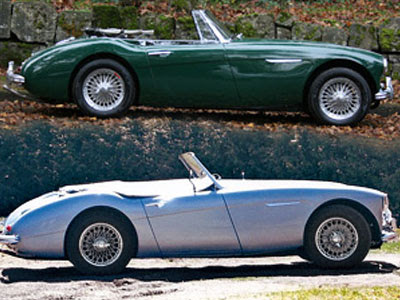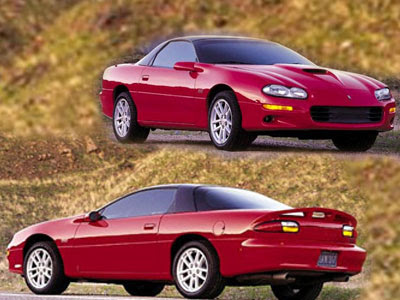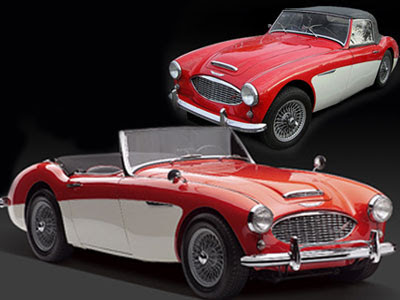On-road testing of new treatments can be problematic if they have not been shown to be a benefit first in an off-road test environment. A driving simulator is an ideal test environment as it provides a safe, inexpensive and ethical facility to address these issues.
The driving simulator at MUARC was developed by the Transport Accident Commission using the latest silicon graphics projections and provides a 180 degree front view as well as a rear image. The simulator also provides "road feel" through three positive feedback dampers under the car and a quadraphonic sound system. From earlier work, the simulator had been shown to be a valid test environment for evaluating PCMs.
A number of participants were recruited to "drive" the simulator and a total of seven human factor experiments were conducted to test systematically a range of PCMs, including:
* Transverse road markings;
* Lane edge & herringbone treatments;
* The Drenthe province treatment from the Netherlands;
* Centreline and other edgeline treatments; and
* Several enhanced curvature treatments.
Drivers drove a series of test tracks which had previously been programmed to include similar treated and untreated road locations. Speed and lateral position measures were compared at both the treated and untreated locations. Differences were tested statistically to demonstrate significance using Analysis of Variance techniques.
Transverse lines
Transverse lines are high contrast, painted or thermo-plastic strips about 60cm wide that are placed across the driving lane for up to 400m on the approach to an intersection or hazard. They are generally spaced at decreasing spacings in the direction of travel.
The results from this study showed that transverse lines can be effective at reducing travel speed by up to 11 km/h, both immediately after entering the treatment zone (suggesting an alerting effect) as well as throughout the treatment area (consistent with a perceptual effect). However, it did not seem to matter if the transverse lines were at decreasing or constant spacings.
A half Wundt Illusion treatment (forward facing chevrons across the lane) had little effect on travel speed compared to transverse lines.
Lane Edge & Herringbone Treatment
Peripheral transverse lines (approximately 60cm from the lane edge) also resulted in significant speed reductions on the approach to an intersection, although not as large as the full-width lane lines.
A herringbone pavement marking system with decreasing line frequency had been previously suggested as a PCM to speeding in the lead-up to a road hazard. This was a variation of peripheral transverse lines angled at approximately 45deg to the edgeline that can be placed either pointing towards the approaching vehicle or away from it.
The results showed some speed reductions for herringbone edgeline treatments, similar to those for the peripheral transverse lines above. In addition, it did not seem to matter if these lines were perpendicular to the edge of the road or slanted either towards or away from the driver.
A novel tree planting alongside the road at diminishing spacings had no effect on travel speed.
The Drenthe Province Treatment
This treatment was first developed in the Netherlands and has been used there to counter speeding on 80 km/h rural highways.
The standard version comprises a gravel centreline (with while intermittent strips) as well as intermittent gravel edgeline treatments and provides 2.25m of free road surface between these treatments. Variations of the Drenthe treatment examined here included white painted edgeline treatments (no gravel) and solid gravel edgeline treatment.
The results showed that only the standard Drenthe treatment elicited significant speed reductions of up to 2 km/h but did cause vehicles to move 16 cm closer to oncoming traffic. Other variations failed to produce significant speed reductions.
Thursday, February 19, 2009
Perceptual Countermeasures Simulator Approach
Posted by semo at 10:41 PM 0 comments
Tuesday, February 17, 2009
Corvette C6R SkinPack : Released
20 skins for the C6R:
Corvette Racing 2007 Sebring edition
Corvette Racing 2008
Corvette Racing 2008 Laguna Seca edition
Luc Alphand Aventures LMS 2008
Luc Alphand Aventures LMS 2007
Luc Alphand Aventures 24H SPA
DKR Engeenering
Carsport Holland
PSI Experience 2007
PSI Experience 2006
UPS Team
Wiesmann Team
Sims & Skins team
Released for GTREvo and rFactor
Have fun :)
Corvette Racing 2007 Sebring edition
Corvette Racing 2008
Corvette Racing 2008 Laguna Seca edition
Luc Alphand Aventures LMS 2008
Luc Alphand Aventures LMS 2007
Luc Alphand Aventures 24H SPA
DKR Engeenering
Carsport Holland
PSI Experience 2007
PSI Experience 2006
UPS Team
Wiesmann Team
Sims & Skins team
Released for GTREvo and rFactor
Have fun :)
Posted by semo at 2:47 PM 0 comments
Labels: GTREvo/Race On
Sunday, February 15, 2009
Z28 Chevrolet Camaro LS1 V8 Sports Coupe
Z28 Chevrolet Camarore LS1 V8 Sports Coupe
The MK IV Chevrolet Camaro retained the same layout as the very first Camaro's back in 1967, 2-doors, 2+2 seating, rear-wheel drive, choice of V6 and V8 powerplants, and available in both coupe and convertible forms (the convertible was introduced in 1994).
The fourth-generation Chevrolet Camaro debuted for the 1993 model year on the previous generation Camaro platform.

Z28 Chevrolet Camarore LS1 V8 Sports Coupe
The MK4 Camaro featured the 5.7 L (350 cid) LT1 V8 engine that had been introduced in the Corvette one year earlier, as well as an optional six-speed manual transmission. The 1998 model year was refreshed and revised with both exterior and engine changes. Replacing the LT1 was GM's all-new 5.7 L (346 cid) LS1 which had been introduced with the Corvette C5.
The Camaro is to return in 2009 however as a retro styled sports coupe.
The fourth-gen Camaro would last up through the 2002 model year, at which point production was stopped due to slow sales.
Posted by semo at 9:11 AM 0 comments
Labels: Chevrolet, Spors Car, Sport coupe
Friday, February 13, 2009
Frogeye Sprite Austin Healey the first of several Sprite models
Frogeye Sprite Austin Healey
Frogeye Sprite Austin Healey the first of several Sprite models.
The Austin Healey Sprite which was introduced in 1958 was a diminutive roadster with an unmistakable headlight arrangement.
The prominent headlights were initially intended to be flip-up units. However the cost of retractable headlights was to high, and instead they were fixed in what would have been the 'up' position. Their unusual location gave rise to the cars affectionate nickname, the "Frogeye" Sprite.
The Austin Healey Sprite MK I was powered by a 1.0 litre, inline, four cylinder engine which developed a grand total of 43 horsepower. Coupled to a four speed manual gearbox it was capable of propelling the car up to 84 mph.
The Frogeye Sprite (which was discontinued in 1961) was the first of several Sprite models. In 1962 the MK II Austin Healey Sprite was introduced. The MK II introduced several updates, the most noticeable of which was a more conventional headlight layout. From 1961 the Austin Healey Sprite was also sold as the MG Midget.
The prominent headlights were initially intended to be flip-up units. However the cost of retractable headlights was to high, and instead they were fixed in what would have been the 'up' position. Their unusual location gave rise to the cars affectionate nickname, the "Frogeye" Sprite.
The Austin Healey Sprite MK I was powered by a 1.0 litre, inline, four cylinder engine which developed a grand total of 43 horsepower. Coupled to a four speed manual gearbox it was capable of propelling the car up to 84 mph.
The Frogeye Sprite (which was discontinued in 1961) was the first of several Sprite models. In 1962 the MK II Austin Healey Sprite was introduced. The MK II introduced several updates, the most noticeable of which was a more conventional headlight layout. From 1961 the Austin Healey Sprite was also sold as the MG Midget.
Posted by semo at 11:33 PM 0 comments
Labels: Austin Healey, Race Car, Spors Car
All America auto transport Car carrier truck and delivery the car door to door
All America Auto Transport is one of the leading car shipping companies in the world. People who are interested to obtain their services can contact auto transporters. Some of the services provided to patrons are door to door delivery, insurance, license free quotes, flexible payments and affordable price schedules. Open and enclosed vehicle transport is also provided to the customers around the world.
All America Auto transport has been transporting vehicles to states like Indiana, Iowa, Kansas, Arizona, California etc in the country and even overseas. They have a fleet of over 500 car transport trucks. Each car shipping truck is covered by public liability, property damage and cargo insurance.
All America Auto transport has been transporting vehicles to states like Indiana, Iowa, Kansas, Arizona, California etc in the country and even overseas. They have a fleet of over 500 car transport trucks. Each car shipping truck is covered by public liability, property damage and cargo insurance.
Posted by semo at 12:51 AM 0 comments
Thursday, February 5, 2009
MK III Austin Healey 3000 Improved due to engine modifications.
The Austin Healey 3000
The Austin Healey 3000 was the replacement car for the Austin Healey 100/6. The Austin Healey 3000 was a superior car to its predecessor, equipped with many improved features and updated parts. During its production lifetime the Austin Healey 3000 went through three different versions, the MK I, MK II and MK III.
The Austin Healey 3000 MK I (1959 - 1961) was fitted with a 3.0 litre inline six cylinder engine developing 124 horsepower. The engine was equipped with twin SU carburetors. And the car featured disc brakes at the front.
The Austin Healey 3000 MK II (1961 - 1963) introduced several improvements and design changes. The engine was enhanced by the fitment of triple SU carburettors which bumped the power up to 132 horsepower. In 1962 the BT7 2+2 version was introduced. This seating layout became the only option from 1962 onwards. The Austin Healey 3000 MK IIa introduced wind-up windows, a curved windscreen, and a convertible hood.

The Austin Healey 3000
The Austin Healey 3000 MK III (1963 - 1967) was the final version of the 3000 model. The performance was improved due to engine modifications. Peak power was raised to 148 horsepower, giving the 3000 MK III a top speed of 120 mph. The brakes were also enhanced with the fitment of a servo.
In 1967, due to new safety regulations in the cars biggest market - America, the Austin Healey 3000 was discontinued. It's replacement, the MGC, was nowhere near as popular as the Austin Healey 3000.
During its lifetime the Austin Healey 3000 proved to be a capable racing car. And it competed successfully in rally and road races around the world.
Posted by semo at 10:59 PM 0 comments
Labels: Austin Healey, Race Car, RacingCar, Rally Car, Spors Car
Tuesday, February 3, 2009
C6R SkinPack w.i.p. : GTREvo
C6R SkinPack for GTREvo work in progress.
Some real and some fictional skins.
You can follow the progress and give some ideas in the forum
Some real and some fictional skins.
You can follow the progress and give some ideas in the forum
Posted by semo at 2:17 PM 0 comments
Labels: GTREvo/Race On
Subscribe to:
Posts (Atom)






